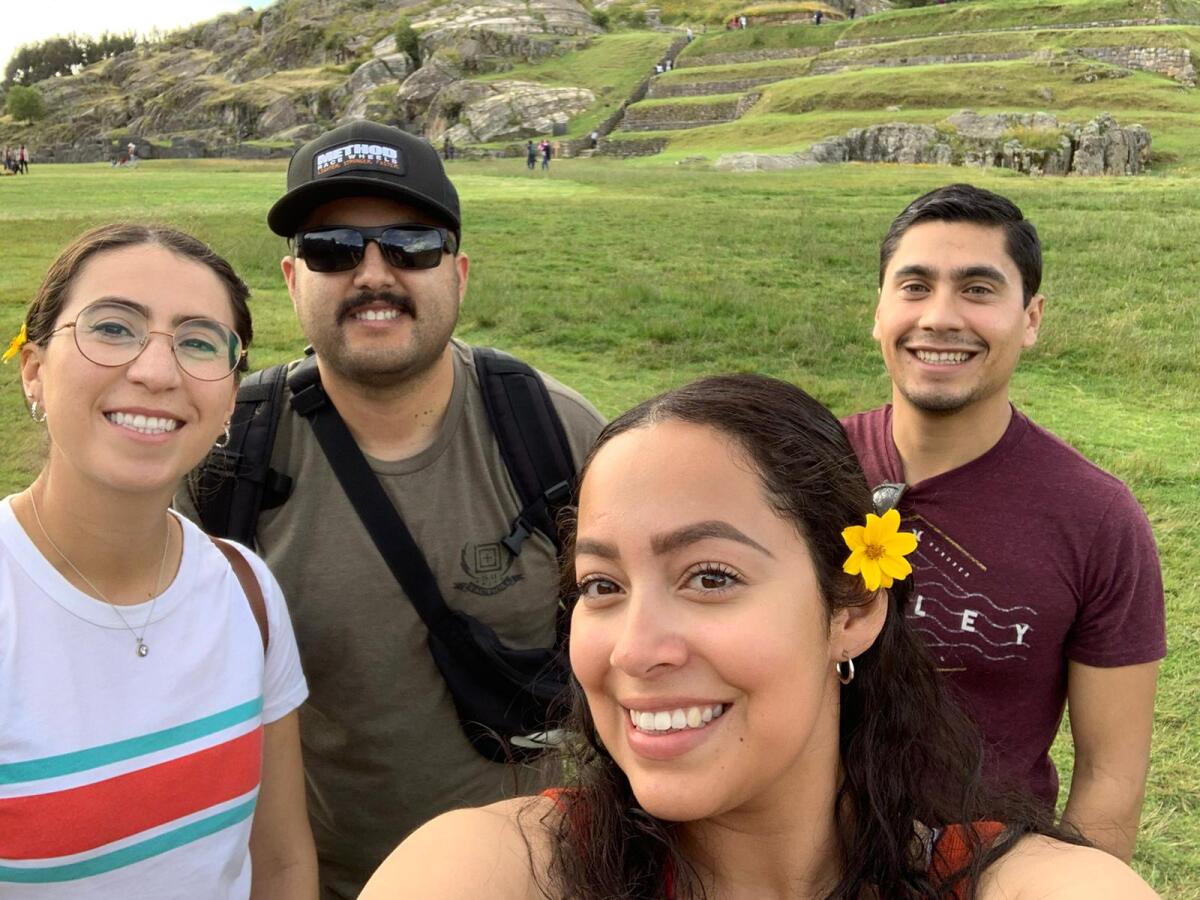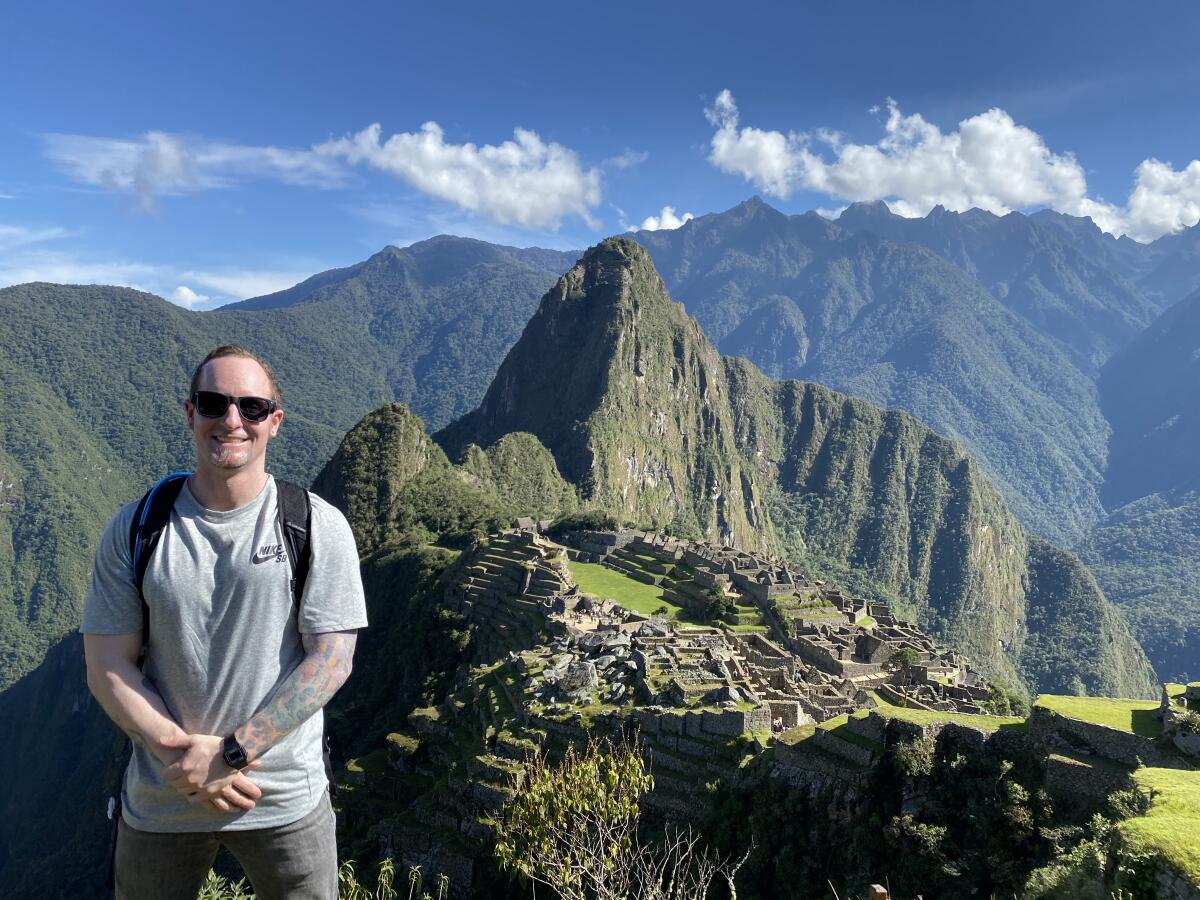A coronavirus state of emergency in Peru has left hundreds of U.S. travelers with no way out

- Share via
While vacationing, Evelin Pineda learned Peru’s president had declared a national emergency because of the coronavirus, and she made a desperate attempt to get back home to California.
Pineda, her brother and two friends hired a private driver to take them from Cusco to Lima, the capital, some 18 hours away. They’d hoped it would be easier to catch a flight back to Los Angeles from there, but it did not work out.
President Martín Vizcarra’s declaration Sunday night of a 15-day nationwide state of emergency and border closure became effective at the end of the next day.

The announcement came as Peru had 71 confirmed cases of COVID-19. Since then, the number of cases in the country has climbed to at least 263, with four confirmed deaths, according to the federal government.
Some travelers said they were unable to leave the country because there was not enough time to make arrangements after the government made its announcement before all international travel was suspended to help contain the spread of the coronavirus.
Pineda, 28, of Whittier, Calif., and the others in her group were among hundreds of U.S. citizens who found themselves with no way to leave.
Pineda, who had expected to leave Peru on March 26, said she felt grateful that a friend’s parents were allowing her and the others in her group — residents of Pico Rivera and Whittier in their 20s — to stay at their home in Lima during the state of emergency.
“I’m somewhat lucky,” Pineda said in a phone interview Thursday. “Other travelers from the U.S. are in quarantine in hotels, hostels — even at the airport.”
Shawn Hill, a 38-year-old special-education teacher for the Beverly Hills Unified School District, was among the less fortunate.
To avoid racking up costly hotel bills on top of paying rent in downtown Los Angeles, he opted to stay at a hostel in Cusco during the national emergency.
“I’m with a bunch of people, which probably isn’t ideal for the situation, given that you have to share everything with everyone around here,” he said by phone. “But I wasn’t prepared for an extra 15 days here in Peru, so I have to make do.”
Hill said he was worried about his students — and keeping his job.
“I have been told that we’re supposed to be teaching online when we get back from spring break,” he said. “But I don’t have the tools, my lesson plans, my textbooks. I don’t have anything to teach my kids from out here. Not only that, but the Wi-Fi is horrible. So I’m concerned about losing my job, because I can’t perform the duties that are asked.”
From the hostel in the Peruvian Andes, Hill started a Facebook group called Americans Stuck in Peru. There, travelers exchange updates regarding contact with public officials in the United States, along with what they describe as frustration with local authorities and unresponsive airlines.
Group members also created a spreadsheet to keep track of U.S. citizens stranded in Peru. By their estimates, more than 1,600 U.S. travelers got caught by the state of emergency.
At a news conference Thursday, President Trump indicated that he was aware of the U.S. travelers stuck in Peru.
“We’re trying to get them out,” Trump said. “We’re going to work it out.”
Noting that Mexico and Israel moved to repatriate their citizens following the Peru shutdown, Hill said he hoped that the U.S. could help get people out as soon as possible.
“I know there are people stuck all over the world, so we’re not [the U.S. government’s] No. 1 priority,” Hill said. “But they need to do something to help us out.”
More to Read
Sign up for Essential California
The most important California stories and recommendations in your inbox every morning.
You may occasionally receive promotional content from the Los Angeles Times.














